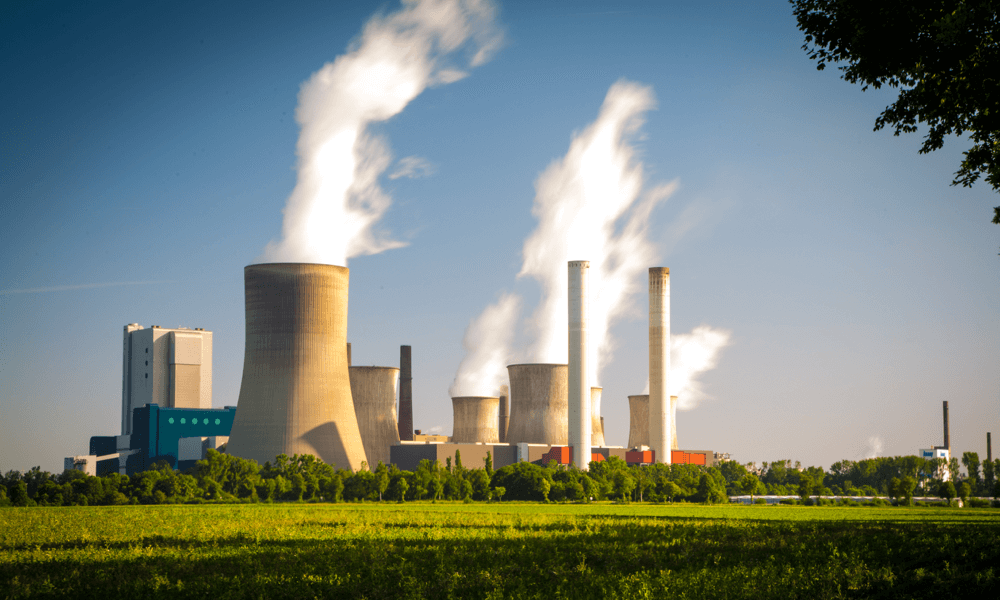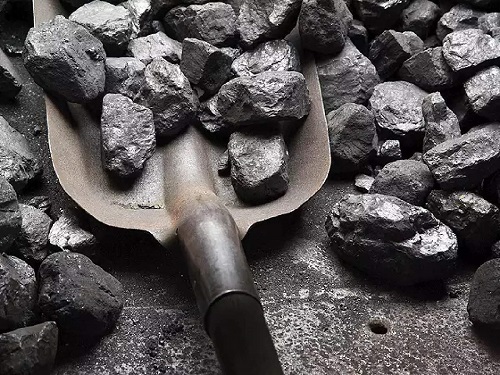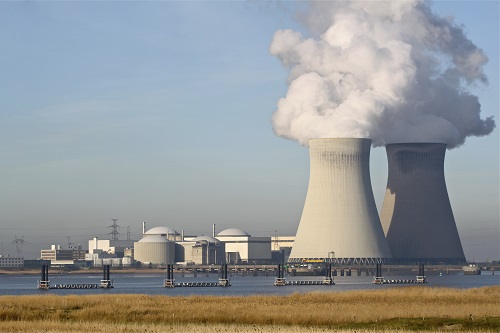As can be inferred from the name, non-renewable energy sources are those that will one day run out, and there is no chance for their resources to be revitalized, at least for many generations. When we talk about non-renewable sources for power generation, we are most likely concerned with fossil fuels including coal, oil, and natural gas.
We are going to talk a little about these non-renewable energy sources here, but you can also go along and browse through our platform to find the best products that fit your needs.
What are non-renewable energy sources?
The basic element in fossil fuels, as our main source of power generation, is carbon. And carbon is a basic element from which all living organisms are made from. You can say that carbon is another element of life besides water. Now, since hundreds of millions of years ago, even before dinosaurs, there have been dead bodies of living organisms such as plants, algae, and micro creatures, then bigger creatures, dinosaurs, and animals buried under the seabed, rocks, and another sediment.
Staying for millions of years under the high heat and the crushing underground pressure, the remains of those living organisms eventually turned into the fossil fuels we know and use today. It is now clear that these sources of energy are non-renewable. Fossil fuel resources are found in many parts of the world, but they are depleting every day until there is none left. It is, therefore, of high importance for us to be conscious of non-renewable energy sources and their usage.
The Good and the Bad of Non-Renewable Energy Sources
As was already mentioned, fossil fuels are our main intention when we talk about non-renewable energy sources. What makes them so special is that they are easy to extract, store, and transport. We can say easy because it is just something that we have been doing for so long, and we have all the technology and infrastructure we need to work with them. The most important trait of fossil fuels, however, is that there is an immense amount of concentrated energy in tiny bits of them.
You will unleash the concentrated energy of non-renewable energy sources by burning them. However, this burning is not without harmful consequences. Many fossil fuel combustion products are harmful to the environment and living organisms such as humans. Fossil fuel combustion (burning) could lead to air, water, and land pollution.
Combustion of non-renewable energy resources produces greenhouse gases such as carbon dioxide that would trap the heat in the atmosphere leading to global warming. Despite carbon dioxide could be consumed by many plants or even sea creatures such as plankton during their photosynthesis, the rate at which carbon monoxide is produced is way more than the rate it is consumed, meaning that it would leave more negative impacts than positive ones.
There are also pollutants such as nitrogen oxides and carbon monoxide produced during the burning of non-renewable energy sources that are quite toxic to human health and would also result in negative environmental phenomena such as acid rain. It is important to note that despite there are ways to control the amount of pollution produced by fossil fuels, they can never be fully eliminated.
Non-Renewable Energy Sources: Coal
Among different non-renewable energy sources, coal is a widely used one in the power generation industry. This fossil fuel is also called the “dirty” fossil fuel due to its high level of pollutant production. Coal is these black or dark brown rocks that are the product of a process called carbonization. Carbonization is the process of ancient organisms turning into carbon in the form of coal and it is very reliant on how much pressure and temperature those organisms were crushed together under. It can be inferred that not all coal is the same, due to different levels of carbonization. A fun fact is that 1 cubic foot of coal would need 10 cubic feet of solid vegetation crushed together for millions of years.
Now, since not all coal is the same, it is ranked based on how much carbonization it has gone under. The lowest-ranked coal is peat. Carbonization of this coal has been the least amount acceptable for useful coal. Peat has been used in countries such as Finland and Ireland as an important fuel. Anthracite, on the other hand, is the highest rank of coal. Those parts of the world where the earth’s movements are gigantic, where mountain ranges are also formed, are those regions in which anthracite is formed. There are mountain ranges in countries such as the US that are rich in such high-rank coal.
No matter what rank it has, coal is mined to be used for energy generation. Now, coal mining can be done in two ways: surface mining and underground mining.
As can be deduced from the name, surface mining happens when coal is quite close to the surface of the earth. In this case, the area under which the coal is distributed shall be cleared of trees and soil so that coal can be easily cut out of the ground. The scenery left from such mining is a horrendous one.
If the coal cannot be accessed this easily from the surface, underground mining comes to play. Some heavy machinery will be used to cut off the coal from depths as much as 1000 feet. This process is not without risks, as the gases released during this process are toxic for miners to breathe and could also impose the risk of explosion.
Many countries such as the US, China, and Germany have large coal resources, and coal would play an important role in power generation for them. But, just like anything else, it has its advantages and disadvantages.
Advantages and Disadvantages of Coal
Coal is one of the reliable non-renewable energy sources, and there are many parts around the world still rich in this fossil fuel. It can be stored and used quite easily making it a handy source of energy. The byproducts of its combustion could also be used for making plastics, cement, etc.
Nonetheless, coal has its significant disadvantages as well. As was mentioned earlier, mining is quite dangerous and harmful due to the release of toxic and flammable gases. There is also the risk of collapses and cave-ins. Moreover, burning coal produces an enormous amount of pollution even using the latest technology, making it a “dirty” fossil fuel. In addition, that toxic gas that hopefully did not explode during mining would be released into the atmosphere instead.
Non-Renewable Energy Sources: Oil
Oil, crude oil, or petroleum is a liquid fossil fuel that is another of non-renewable energy source. Oil is trapped underground in gaps formed inside rocks. Sometimes it might bubble out of the ground, but mostly it is deep under it. The oil deposits could be found on land or under the seafloor. Drill rigs are used to drill deep into the ground to reach the deposits. After reaching the deposit, oil can be pumped 24/7 for as many as 30 years and even more in some cases.
Offshore oil platforms are gigantic structures, which are built when oil deposits are found under the seafloor. The pipes will go deep into the water to reach the hole drilled onto the seafloor and pump the oil out. This crude oil, however, is not ready to be used. This oil needs to be refined to be cleared of impurities and contaminants and further refined to produce gasoline and other products such as rubber, plastic, and so many more.
Advantages and Disadvantages of Oil
Oil is reliable and due to its extensive applicability, it is quite valuable, which means many jobs will be made and secured directly and indirectly in various industries due to extracting it. Maybe the most significant product of oil is the gasoline and diesel that feed the engines of our cars and trucks.
Nevertheless, just like coal, oil also has its dangers for the environment. The drilling procedure is quite a sensitive one, as a problem with the machinery could result in oil entering the water, which would impose a very high risk on the natural habitat. Oil spills on land are also harmful to the environment. The risk of oil spilling is also present when it is being transported in oil tankers or through pipes. Moreover, burning fuels produced from oil introduces hazardous fumes and gases into the atmosphere that are toxic and promote global warming.
Non-Renewable Energy Sources: Natural Gas
Natural gas is the other important non-renewable energy source, which similar to oil is trapped in underground reservoirs. Natural gas is a hydrocarbon that is primarily made from methane but could include some other alkanes as well such as nitrogen, helium, carbon dioxide, and hydrogen sulfide.
Natural gas deposits can be found in depths of a few hundred meters underground and can stretch for many miles. To reach these pockets of natural gas, different methods are used. One method is hydraulic fracturing in which high-pressure water is employed to fracture the rocks and release the trapped natural gas. Using acidic compounds to dissolve the rock is another method when the rock is too hard to fracture by high-pressure water. Sand and glass grains could also be used to prop open the rock.
One of the important applications of natural gas is for fueling the stoves in our kitchens and furnaces in our basements that provide us heating for our home, and water for hot showers. Its compressed form (CNG) and liquified form (LNG) are used for fueling cars in some parts of the world. Natural gas is also used in power plants to fire their boilers or gas turbines.
This branch of non-renewable energy sources is colorless and odorless, but then you might wonder what that smell of rotten egg is when there is a gas leak in the kitchen or when you leave the stove knob on for a while before starting the fire. The fun fact is that the smell of rotten eggs you feel comes from a harmless chemical added to natural gas called mercaptan. This stinking chemical is added so that you would detect any gas leak for safety reasons. Mercaptan is less corrosive and toxic than similar sulfur compounds that can be found in natural materials such as rotten eggs and garlic.
Advantages and Disadvantages of Natural Gas
Natural gas is more easily extracted and is the cleanest fossil fuel compared to coal and oil. Its liquified form (LNG) is even cleaner than the gaseous form and stores an enormously higher amount of energy for the same volume. Natural gas is cleaner than burning other fuels due to its burning close to complete combustion conditions, producing only carbon dioxide and water vapor.
Despite all the good about natural gas, it is not without negative impacts. The methods used to extract natural gas could harm the environment by inducing tiny earthquakes during hydraulic fracturing and contaminating sea and underground water resources when using chemicals during the process of natural gas extraction. Additionally, natural gas is a hydrocarbon gas after all, which means that its release to the atmosphere even without burning it makes it a potent greenhouse gas, and burning it will produce carbon dioxide, which is a greenhouse gas expediting the process of global warming.
Other Non-renewable Energy Sources
Nuclear Energy
As can be inferred from the name, this type of energy comes from the core, or nucleus, of the atom. This enormous amount of energy is released when a nucleus of an atom splits in a process called nuclear fission. Despite nuclear energy itself being one of the renewable sources of energy, the substances required for the production of this energy are among the non-renewable energy sources.
Nuclear power plants mostly use an element called uranium for the process of nuclear fission. This element is found in many locations around the world, but a special type called U-235 is one used in such power plants. Uranium in any of its forms is a non-renewable source of energy.
The amount of power generated through this process is so high that it becomes a very interesting source of energy. In addition, it does not release any toxic or greenhouse gases into the environment and can be built in urban or rural areas to generate power and create jobs.
Nonetheless, nuclear energy is highly difficult to harvest, and the machines and systems as well as the structures used to produce and contain the process of power generation from nuclear energy are quite complex in design and difficult to build and run. Moreover, safety concerns are through the roof with nuclear energy, not only regarding the safe and reliable operation, but especially because the product of nuclear fission is not just the energy, but is also the highly toxic radioactive material, increasing the risk of cancers, bone problems, blood diseases, and other issues. Safe deposition of such material is quite sensitive and is always with risks.
Biomass Energy
Biomass is mostly considered a renewable energy source, it comes in many forms, and some of its forms come from the residues of plants and wood from industrial and agricultural processes, or from plant or tree crops intended specifically to become biomass.
If the rate of consuming biomass produced from these sources were higher than the rate of its production, which comes from proper replantation, such biomass could be considered as one of the non-renewable energy sources.
Buy Equipment or Ask for a Service
By using Linquip RFQ Service, you can expect to receive quotations from various suppliers across multiple industries and regions.
Click Here to Request a Quotation From Suppliers and Service Providers
Read More On Linquip








